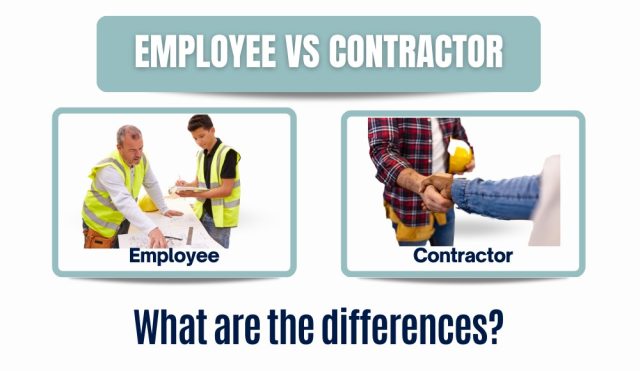
Book a Free Consultation!
✅Builders CFO Program
✅Business Improvement Program
✅Taxation Advice


Want to learn this through audio? Click to play!
Let’s talk about contractor vs employee. This is one of the most frequently asked topics among business owners. In many cases, bringing in an independent contractor to handle a specific job just makes sense. Sometimes you need someone with expertise or skills that none of your employees have. Other times, it’s about getting someone for a short period to clear a backlog of work. And hey, maybe you just want to skip the whole formal recruitment process, right?
But be careful. Even if you hired them as a contractor, the Australian Taxation Office (ATO) might just view them as an employee. And trust us, the penalties for disguising an employee as an independent contractor (also known as a “sham contracting arrangement”) can be as high as $18,780 for individuals and $93,900 for corporations, per contravention.
So, as a business owner, how can you figure out if your newest team member is an employee or contractor? What are the key differences? Well, here’s the deal – let’s talk about some of the main differences between the two.
Before we get into that, we just wanted to give a quick shoutout. If you’re wondering whether a contractor or employee is the right fit for your business, feel free to reach out to our business advisors. You can find the contact information here.


Employee vs Contractor
1. Where and how they work
An employee is considered part of the business, and in most cases, employees work on-site (unless they’re telecommuting). They generally have to accept any work assigned to them and can’t ask someone else to do it. They have to do the work themselves.
On the other hand, an independent contractor runs their own business. They may be asked to work on-site, but the work location is quite flexible. They work anywhere they can get the job done. They can also subcontract or delegate the work to someone else. The key difference here is that independent contractors are generally not under direct supervision or control of your business.
2. How they’re paid
Employees are paid regularly for the time they work, by the item or activity they complete, and/or by a commission.
Independent contractors have a contract stating the work they’ll do (but not how they’ll do it), and for how much. They may negotiate their own fees and working arrangements. And while they can ask for partial payment up-front, they’re generally paid when that work is completed.
3. What they do
Employees are usually hired for a specific role or job within the business and work under the direction and control of their employer.
Independent contractors, on the other hand, are running their own business, and are generally brought in to provide a service, with no expectation that they will be integral to the ongoing operation of the business. They also have more freedom in how they complete the work and can take on other clients simultaneously. The working arrangement should be temporary and project-based. Independent contractors can also perform work for more than one business at a time.
4. Tools of the trade
Employees are given all the tools they need to do their job, whether it’s computers, earthmoving equipment or anything in between. If they need something else to do their job, the employer either buys it, reimburses them or gives them an allowance.
An independent contractor will have their own tools, which they use to perform the work they’ve been asked to do. If they feel they need another tool, either to complete the job or to do it more efficiently, they use their own money to purchase it.
5. The risk factor
Employees aren’t under any financial risk while they’re working. They don’t make a profit or a loss–the business does.
Independent contractors can either make a profit or a loss on every job they do. If they finish the job quickly, they’ll still be paid the same amount as if they took their time. However, if the job takes longer or they have to put in extra work because it was done poorly, they could end up making a loss. They also have to cover their own expenses such as insurance, equipment, and taxes.
6. Entitlements
Employees are entitled to receive superannuation contributions from their employer, which gets paid into a nominated superannuation fund. They are also entitled to paid leave (e.g. annual leave, personal/carer’s leave, long service leave), or a loading instead of leave entitlements if they’re casual employees.
Independent contractors are generally responsible for paying their own superannuation, and also need to make their own superannuation contributions, although in certain situations they may be entitled to receive superannuation contributions. And they don’t receive any paid leave.
7. Tax
Employees have tax deducted from their pay by their employer, whereas contractors pay their own tax (including GST) directly to the ATO. Their own income tax rate may vary, depending on their personal circumstances.
Contractors also have to provide an ABN number, and many will invoice for their services, including GST if they are registered for it. This is because they are viewed as running their own business.
Of course, the distinction between employee and contractor isn’t always so cut-and-dried. An independent contractor may have all of their equipment supplied, or get paid every fortnight. They may even receive superannuation contributions.
Engaging in sham contracting is prohibited under the Fair Work Act 2009 and penalties may be applied in the event of contravention. Fortunately, the ATO has come up with an Employee/Contractor Decision Tool to help make the distinction. By answering a series of questions, you can quickly see whether the ATO sees your latest recruit as an employee or an independent contractor.
Paying someone as a contractor when they’re actually an employee can have serious consequences for your business. As well as the financial penalties, your business may end up with a bad reputation that drives both customers and potential employees away.
So use the ATO’s decision tool and if you’re still not sure, consider getting independent legal advice. Just get in touch and we’ll make sure your contractor isn’t actually an employee. Let us help you out!

Send To Someone